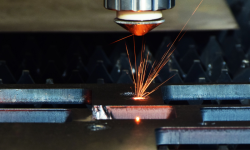Choosing the right laser cutting machine depends on several key factors tied to your industry, materials, production volume, and budget. Here’s a clear guide to help you make the best decision
1. Know Your Material Requirements
Different laser types are suited for different materials:
| Material Type | Recommended Laser |
|---|---|
| Metals (steel, aluminum, copper) | Fiber laser |
| Wood, plastics, acrylic, leather | CO₂ laser |
| Thin metals & non-metals | Hybrid or CO₂ |
| Glass, ceramics | UV laser (specialized) |
2. Understand Machine Types
- CO₂ Laser Cutters
- Ideal for non-metals (wood, leather, acrylic).
- Affordable for light industrial and craft use.
- Slower than fiber lasers for metals.
- Fiber Laser Cutters
- Best for metal cutting (steel, brass, aluminum).
- High speed, low maintenance.
- Higher initial cost but lower long-term cost.
- Nd:YAG/Nd:YVO₄ (Crystal Lasers)
- Suitable for precision cutting (medical, electronics).
- High maintenance costs.
3. Cutting Thickness & Power Needs
Match machine power (measured in watts) to your cutting needs:
| Thickness (mm) | CO₂ Laser (Watts) | Fiber Laser (Watts) |
|---|---|---|
| 1–3 mm | 40–100W | 500–1000W |
| 5–10 mm | 100–300W | 1000–3000W |
| 10+ mm | Not recommended | 3000W+ |
4. Key Features to Consider
- Work area size – Depends on your sheet sizes or project dimensions.
- Software compatibility – For CAD/CAM integration.
- Cooling system – Especially for high-power lasers.
- Automation – For high-volume industries, look for automatic loaders/unloaders.
- Service & support – Local service reduces downtime.
5. Match It to Your Industry
| Industry | Recommended Laser Type |
|---|---|
| Metal fabrication | High-power Fiber laser |
| Advertising/signage | Mid-range CO₂ laser |
| Automotive/aerospace | Fiber laser with automation |
| Medical devices | Precision Nd:YAG or Fiber |
| Crafts & prototyping | Desktop CO₂ or diode laser |
6. Budget Considerations
- Entry-level CO₂: $3,000–$10,000
- Mid-tier CO₂/Fiber: $10,000–$50,000
- Industrial Fiber Lasers: $50,000–$500,000+
Final Tips
- Start small if you’re prototyping or testing new products.
- Invest in training for your team.
- Get sample cuts from vendors before you commit.
- Check reviews & maintenance costs before purchasing.
Would you like help comparing specific models or brands?









